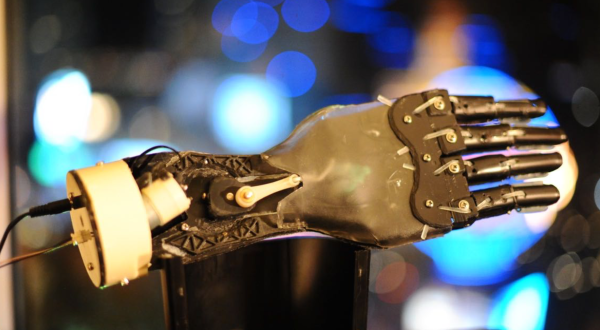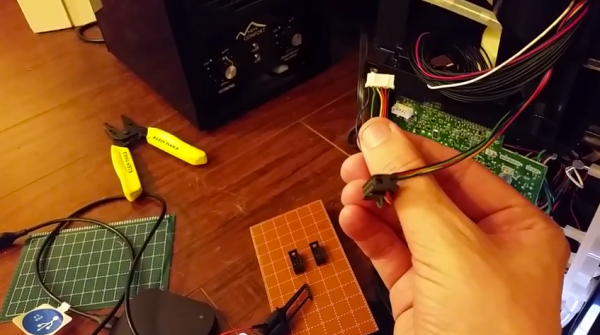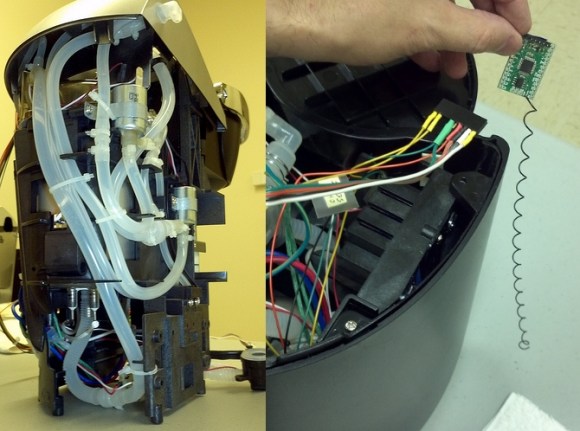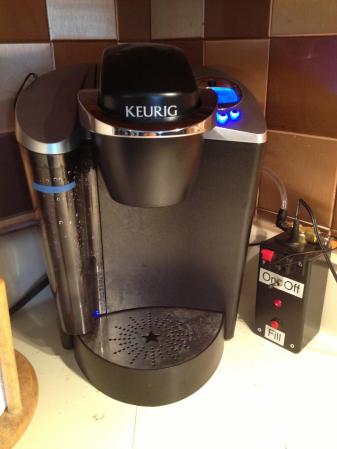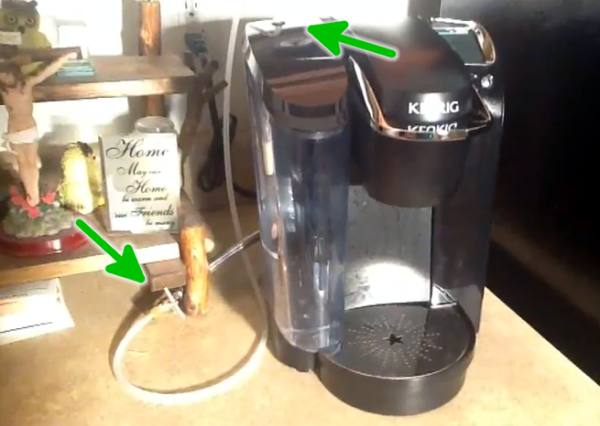Keurig, the manufacturer of a single-serve coffee brewing system, has a very wide following amongst coffee drinkers. Their K-cup (pre-packaged coffee grounds with a coffee filter, all in a plastic container) is an interesting concept and makes brewing a single cup of coffee much more efficient over making a whole pot. Their newer line of coffee makers, the Keurig 2.0, has some interesting (and annoying) security features though, which [Kate Gray] has found an interesting and simple way around.
The DRM security in these coffee makers is intended to keep third-party “cups” from being used in the Keurig. It can recognize an authentic Keurig cup, and can stop the operation of the coffee pot if a knockoff is placed in the machine. We can only assume that this is because Keurig makes a heap of cash by selling its canisters of coffee. One simple solution was already covered a few days ago by taping an authentic lid to the machine. This one doesn’t require any authentic pods but just removes one wire from a wiring harness inside of the case.
There are other ways around the security on these devices, but when [Kate Gray] actually investigated, she found the security decidedly lacking. With something this simple, one can only speculate how much Keurig has really invested in making sure users don’t use third-party cups of coffee in their machines, but it also brings up the classic question of who really owns hardware if we can’t use it in the way we want, rather than the way the manufacturer wants.
You can read more about the project on its Reddit page. Thanks to [MyOwnDemon] for the tip!

